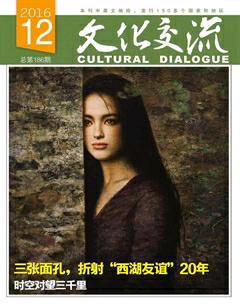精微世界雕出氣象萬千
徐繼宏
精微藝術雕刻由微型雕刻向“精細”“精致”“精巧”“精美”拓展而來。一般說,微型雕刻注重雕,精微雕刻注重刻與繪。精微雕刻最為顯著的特點是形巧而藝精、技微而術全,展現的是萬千氣象、恢宏華章,因此又被稱為“神刻意雕”。
日前,筆者走訪了浙江省精微雕刻藝術研究會會長、浙江省工藝美術大師李浩先生,一方面感受精微藝術世界“細入毫發,巨納乾坤”的無窮魅力,另一方面體悟李先生“博采眾長,從善如流”的執著追求。
李先生已過不逾矩之年,但言行之中處處有英武之氣流溢。他祖籍江西廬山,年輕時參軍,在部隊待了十數二十年,轉業落戶到浙江杭州。因為從小受家庭書香熏陶之故,他一入伍就被選拔做宣傳員,詩、書、畫得到全面發展、全面提高,為日后從事精微藝術雕刻奠定了扎實的基本功。回到地方后,受底蘊深厚廣博的浙江金石篆刻傳統的影響,李先生一心愛好微雕,他在浙江省高級工藝美術師葉建民先生指導下,用心鉆研雕刻通行技藝;之后,又向海子、浙江省工藝美術大師黃厥明學習微書,向四川省工藝美術大師潘啟慧學習微畫,成就日顯。
據李先生介紹,材料是所有雕刻的必備條件,包括金屬質地類、礦石質地類、陶瓷質地類、動物質地類、植物質地類等,但必須軟硬適中,質地細膩,純潔無瑕,不澀不膩。他說,他的微雕總以石材為主。為了取材,他每年多次進山采購石材,踏遍了浙江的青田山口、臨安昌化和福建的壽山、樟林的山山水水。他與農民交朋友,與同道講感情,至今與石農保持著密切的聯系。
從當初的微雕愛好者,到后來的工藝美術大師,再成為如今的中國精微藝術雕刻領域的翹楚和領軍人物之一,李先生用他的勤奮和執著書寫了自己的藝術人生。他的微雕作品多次代表浙江參加中國工藝美術大賽并屢獲大獎,繼2006年《奧林匹克憲章》微刻配北京奧運會吉祥物福娃組章獲第七屆中國工藝美術大師作品暨工藝美術精品博覽會“百花杯”金獎后,又連年獲得諸國際藝術博覽會、中國藝術博覽會、浙江工藝美術精品博覽會、中國(杭州)工藝美術博覽會金獎。工藝美術界的前輩和同道對李先生的作品多有贊譽,并稱他為“金獎專業戶”。對此,李先生總是付以淡淡的一笑。
精微藝術常人難以肉眼看見,但同樣可以吞吐萬象,并有獨到技藝,李先生將之當作陶冶情操、修身養性的藝術活動而喜愛、癡迷。他說,不論微書還是微畫,不論欣賞還是創作,都能夠使人在放大鏡、顯微鏡下感受到中國傳統書畫、中國傳統文化的點線之美、結構之美、章法之美、氣韻之美和意境之美。李先生在精微雕刻作品中,把中國傳統國學融入不同的創作材料,從孫子兵法、前后出師表,邊塞詩到論語、周易甚或諸佛經,他都能嫻熟并巧妙地表現。
李先生告訴筆者,精微雕刻,技在微,藝在精。他曾微雕西湖十景組章,把西湖四季美景刻繪于壽山石、青田石、巴林石上,一景一枚,一景一色,一景一形,同時,每枚印章的景略圖都配上清代乾隆帝的吟詩,將詩、畫、印三者結合展現。
李先生的微雕作品《富春山居圖》創作于2011年,時值臺北故宮博物院與浙江省博物館合璧展出元代黃公望的同題巨作。李先生從立題到定稿,從選材到定制工具,從創作到完成,費盡千辛萬苦。作品甫一面世,讓人嘆為觀止、贊不絕口:借助顯微鏡,只見黃公望的山水,董其昌、康熙的書法、印章,均原景、原樣呈現,纖毫無損。
李先生的另一件作品《貫休繪十六羅漢圖》取清代以前的摹刻版本,用和田墨玉刻繪,面目惟妙惟肖,人物栩栩如生。作品輔以傳統的木材作襯托。
李先生自有不俗的藝術眼力和非凡的雕刻定力,但他認為藝海無涯,更無止境,藝術需要不斷地探索、豐富和發展。作為精微雕刻藝術的傳承人,李先生深知自己的責任,他說,他現在更多的思考是如何把這門精微雕刻藝術傳承下去并發揚光大。2015年4月,在他的倡導和努力下,浙江省精微雕刻藝術研究會成立。2016年2月,浙江精微雕刻藝術被杭州市列入非物質文化遺產名錄。李先生興奮地說:“精微雕刻藝術得以薪火相傳,要靠一代又一代人去傳承、去推動。浙江精微雕刻藝術的春天一定會到來。”
(本文圖片由作者提供)
The art of micro-carving refers generally to the engraving of infinitesimal characters on ivory or human hair. It takes an all-rounder artist to excel in the field, as can be seen in the artistry of Li Hao, chair of Zhejiang Microscopic Carving Academy.
In his 70s, the man looks much younger than his age. His ancestral roots in Mount Lushan of Jiangxi Province (famous for its revolutionary tradition) and two decades of army life forged the mans soldierly bearing. The artistic talents of Li Hao, who was born in a scholarly family, were fully demonstrated in his army years. After retiring from military service, Li Hao settled down in Hangzhou, where he immersed himself in the rich seal cutting tradition of Zhejiang and learned a lot from masters such as Ye Jianming and Huang Jueming.
“The selection of raw materials is half of the success of final artworks. Micro-carving can be done on a variety of things, such as metals, ceramics and even plants, but it takes the right hardness and texture, and a high level of purity of the material to ensure the quality of the engraving work. I always prefer stones,” Li explains.
To find the best possible stone for carving, Li Hao spends a lot of time in Qingtian, Changhua in Zhejiang and Shoushan and Zhanglin in Fujian, where he has not only found his “dream stones” but also has made a lot of friends with the local farmers and micro-carving artists.
It is diligence and perseverance that has led the man into the frontiers of Chinas microscopic carving scene. Li Hao is now one of the heavyweight figures in the countrys micro-carving realm. Fame and titles, however, are not what he goes after. The award-winning masters lifetime pursuit is excellence.
“The excitement in appreciating the beauty of Chinese art through the magnifying lens is beyond description. Just imagine how the aesthetic essentials of traditional Chinese arts are arranged into a small piece of stone with all structural details and the entire artistic conception perfectly retained!”
His showcase his brilliant talents in seal-engraving and painting in the minutest details of each of the 10 stone pieces.
One of Lis masterpieces is , crafted in 2011. The finest calligraphic and seal details of the original work by Huang Gongwan are presented beautifully on a tiny piece of stone.
In another masterpiece that depicts the late Tang master monk Guanxius painting titled , Li Hao shows his innovation and great ease in combining different materials to create the best aesthetic effects.
The success of Li Hao as an artist not only comes from his high taste and marvelous skills, but also from his vision and a strong sense of responsibility. “In my age, I feel the urgent need to find a way to pass the relay baton to the younger generations.” The result of such a mentality is the launch of Zhejiang Microscopic Carving Academy in Hangzhou in April of 2015. In February of 2016, the microscopic carving of Zhejiang was recognized officially as a city-level cultural heritage.
“It takes the unfailing endeavors of future generations to preserve such a cultural treasure, and I have confidence that a beautiful time is ahead of us,” Li Hao declared in great excitement.

